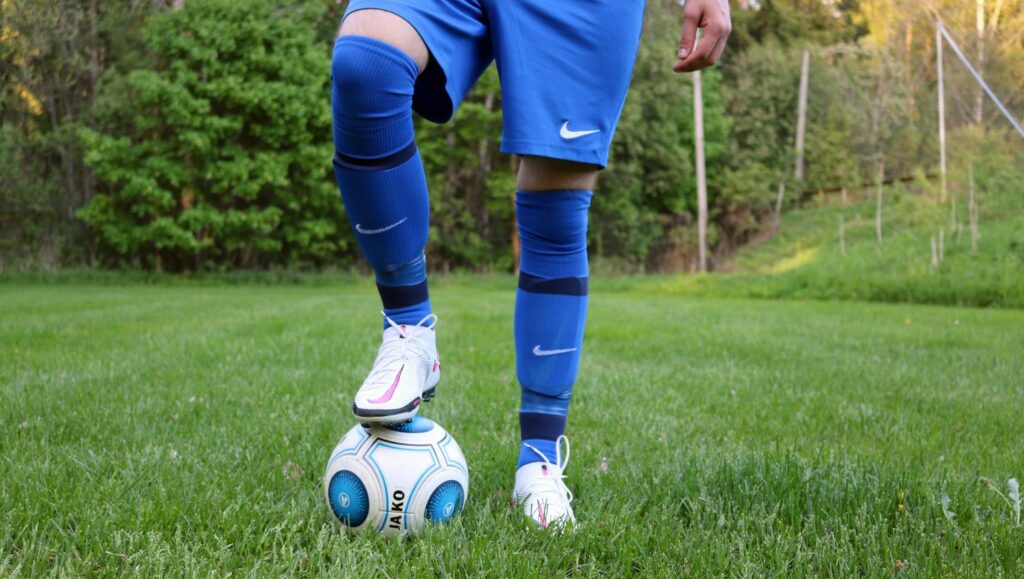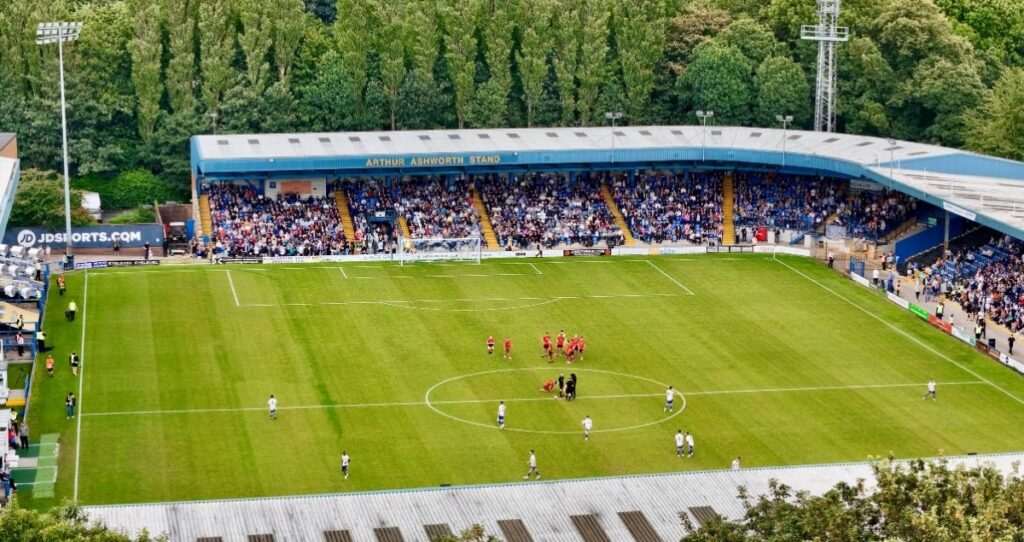Boost your betting experience and get up to $200 bonus right now!
For over a decade, Paris Saint-Germain’s pursuit of European glory has been a rollercoaster ride of grandeur ambitions, headline-grabbing signings, and spectacular moments often tempered by heartbreak. The club’s investment in a dazzling star trio—Lionel Messi, Neymar, and Kylian Mbappé—sparked awe and raised expectations sky-high, but left fans wondering if individual brilliance alone could conquer Europe’s toughest battlegrounds. As the curtain falls on the galáctico era, PSG stands at a crossroads, blending bold youth with experience, reshaping its identity, and asking: can this star power finally deliver on the UEFA Champions League’s grandest stage? In a football landscape dominated by fierce rivals and financial giants, this question resonates beyond Parc des Princes. It’s about the anatomy of a winning team, the alchemy of talent and tactics, and PSG’s evolving strategy in 2025 to transition from star-studded spectacle to genuine European powerhouse. The journey reveals lessons about balance, sustainability, and the heart of football itself.
The Rise and Fall of PSG’s Galáctico Trio: Messi, Neymar, and Mbappé
When PSG exploded onto the global stage with the signings of Lionel Messi, Neymar, and Kylian Mbappé, football fans across the world marveled at the sheer firepower assembled at the French club. This trio, collectively dubbed the “MNM”, promised an end to PSG’s European ambitions, their arrivals symbolizing a sweep towards UEFA Champions League glory that had eluded the club despite domestic dominance.
However, beneath the glamour and record-breaking contracts lay cracks—cracks that soon mattered on the continent’s biggest stage. Between 2021 and 2023, PSG’s wage bill ballooned to an astonishing €729 million, straining financial fair play limits and fostering a wage-to-revenue ratio exceeding 100%. The trio alone accounted for over €800 million in salaries during their stay. The weight of such investment put immense pressure on delivering results, yet the Champions League title stayed frustratingly out of reach.
The team, despite its attacking prowess, often suffered from imbalance. The immense focus on the MNM trio overshadowed the supporting cast, leading to vulnerabilities, especially in midfield and defense. The 2020 Champions League final against Bayern Munich highlighted this – a side packed with stars but lacking cohesion, narrowly losing 1-0 to a more organised and balanced Bayern. That defeat was a stark reminder that football is a team sport, where stars cannot overshadow structure.
The Star Power’s Commercial Impact
While the trio might have failed in securing Europe’s grand prize, they undeniably transformed PSG into a commercial juggernaut. Partnerships with giants like Nike, Adidas, and Jordan Brand flourished, while Qatar Airways and Visit Qatar leveraged this star power for global marketing campaigns that elevated French football’s profile. BeIN Sports coverage, alongside platforms such as Sky Sports and EA Sports, capitalised on the MNM narrative, broadcasting spectacular goals and dribbles that fired imaginations worldwide.
This normalization of star-driven business models saw PSG’s valuation skyrocket, reaching $4.4 billion. Yet, the old question lingered: could off-field success translate to a footballing identity capable of winning Europe? The answer, as 2025 unfolds, is being rewritten with a marked preference for sustainable squad-building over headline grabs. For more about PSG’s evolution and the pitfalls of galáctico-heavy rosters, see how clubs balance star power with structure in PSG’s rebuilding identity.

From Galácticos to Young Guns: PSG’s Strategic Reset and Squad Revamp
After the departures of Messi to Inter Miami, Neymar to Al-Hilal, and Mbappé to Real Madrid between 2023 and 2024, PSG entered a new era. Without the colossal wage demands of the MNM trio, the club slashed its salary bill by over €80 million, improving financial health and UEFA Financial Fair Play compliance. The wage-to-revenue ratio normalized to a sustainable 65-70%, transforming PSG into a club with a pragmatic and scalable business model centered on long-term squad sustainability.
The team’s young core has been thrust into the spotlight. Ousmane Dembélé emerged as the highest-paid player but with earnings far below those of his legendary predecessors. Supported by emerging talents like Bradley Barcola, Randal Kolo Muani, Vitinha, and João Neves, PSG’s lineup blends youthful energy and technical ability with a collective spirit that shines through in high-stakes matches. This shift signifies more than mere economics; it marks a philosophical commitment to playing as a cohesive unit, rather than relying on individual brilliance alone.
Recent Champions League campaigns showcase this transformation vividly. The squad that reached the 2025 final was the youngest in the competition this century, averaging just 25 years and 96 days, comparable only to lean squads like Salzburg, AS Monaco, and Sturm Graz. The midfield trio of Fabián Ruiz, Vitinha, and Neves dominates possession with tactical discipline, while wingers like Khvicha Kvaratskhelia and Barcola terrorise defences with pace and inventiveness.
Key Features of PSG’s New Squad Approach
- Lower wage bill promoting financial stability.
- Young talent focus with high potential growth.
- Balanced squad composition emphasizing team cohesion over individual stars.
- Improved tactical flexibility allowing varied formations including the use of wing-backs for width and attacking freedom.
- Collective mindset driving resilience and adaptability in European games.
Such strategic moves have been fundamental. PSG’s rejuvenated squad approach contrasts sharply with the past, highlighting that Europe’s fiercest battles require brains as much as flair, stamina as much as skill. To dive deeper into how this tactical evolution plays out during fixtures, check out weekly fixtures analysis and tactics analysis.

Comparing PSG’s Old Versus New European Campaigns: What Changed?
Looking across recent seasons, the contrast in PSG’s European campaigns is remarkable. The star-loaded squads, despite impressive attacking talent, repeatedly fell short at the knockout phase. In 2020 and 2022, the team stumbled against balanced, well-organised rivals—a humbling lesson. Stars like Di María and Thiago Silva delivered quality moments, but squad depth and structure were glaring weaknesses.
Fast forward, and the 2025 PSG squad’s European journey reflects a collective prowess. The team dismantled iconic English clubs such as Liverpool, Aston Villa, and Arsenal en route to the final, not through individual heroics, but through high-intensity pressing, tactical intelligence, and fluid positional interchange — a hallmark of teams built for resilience rather than flash.
| Season | Key Players | European Result | Wage Bill (Approx.) | Strategy |
|---|---|---|---|---|
| 2019-2020 | Messi, Neymar, Mbappé | Champions League Final (Runners-up) | €650 million | Star-driven attack, weakened defense |
| 2021-2022 | Messi, Neymar, Mbappé + veterans | Round of 16 elimination | €729 million | High wage, big name signings |
| 2024-2025 | Dembélé, Barcola, Ruiz, Vitinha | Champions League Finalist | €540 million | Youthful, balanced, cohesive |
Increased efficiency is evident. The departure of big names has refined PSG’s play, shifting from reliance on superstar moments towards a team-based approach. Evidence from other European giants suggests that tactical discipline and squad depth tip the scales in competitions like the UEFA Champions League. The balance PSG seeks is now founded on quality across the pitch, rather than concentrated individual stardom.
For more insights on the evolution of football club dominance and balance in European competitions, explore this in-depth analysis.
PSG’s Tactical Identity in Europe: How Structure Trumps Star Power
Success in modern European club football demands tactical versatility, and PSG’s new approach exemplifies this shift. The tactical architecture moves beyond classic formations dominated by star attackers to embrace fluid roles and pressing strategies that demand collective work ethic and adaptability.
Head coach Luis Enrique’s philosophy harnesses the freedom afforded by wing-backs to unleash the attacking talents of Dembélé, Barcola, and Kvaratskhelia, while maintaining defensive solidity. This system enables players to link up intimately in the final third, creating breathtaking passages of play without sacrificing shape. The tactical innovation allows the team to maintain offensive momentum while being prepared to absorb pressure and counter aggressively.
The midfield’s role has evolved into a vital connector, facilitating ball progression while deploying tactical fouls and pressing triggers. This balance between creativity and control creates a rhythm that unsettles opponents. Compared to earlier years, this approach demands less reliance on the pure genius of Messi or Neymar and more on the team’s synchronized effort.
- Wing-backs provide critical width and supply.
- Pressing strategy disrupts opposition build-up.
- Tactical fluidity allows quick formation switches.
- Midfielders balance attack initiation and defensive cover.
- Youth and energy sustain high-intensity play throughout matches.
Such depth of tactical understanding shows why PSG’s European challenges are now stories of disciplined teamwork, not individual flash. The very fabric of the club’s composition and tactics reflects a decisive move away from past dependency on star power, embodying a new footballing identity rooted in collective achievement. For those intrigued by tactical evolutions in club football, a visit to Football News & Tactics Analysis offers fresh perspectives.
The Future of PSG’s Star Power in Europe and Beyond
PSG’s journey in 2025 reveals a shift from reliance on a few astronomical names to creating an ecosystem where multiple talents flourish in harmony. This raises critical questions about the nature of star power in European football’s future. Will PSG resume chasing superstar signings or continue cultivating young talent as the backbone of their strategy? Early indicators suggest a hybrid model, blending experienced figures like Dembélé with emerging prospects, fostering sustainable competitiveness.
This approach also aligns with the club’s commercial partners such as Accor Live Limitless and flagship sponsors like Jordan Brand, which increasingly value authenticity and team identity alongside marketable star appeal. The delicate balance PSG maintains between commerce and sport underlines the complexity of modern football management.
- Investment in youth development: Continuing to empower academy graduates and smart transfers.
- Commercial growth: Leveraging partnerships with brands like Nike, Adidas, and sponsors including Qatar Airways for global reach.
- Financial pragmatism: Controlling wages without sacrificing quality.
- Fan engagement: Building a passionate fanbase through performance and relatable heroes.
- European ambitions: Maintaining focus on UEFA Champions League excellence.
The PSG story, much like football itself, is an ever-evolving drama. With new stars ready to etch their names into history and Europe’s finest competition as the stage, the club’s narrative invites fans to witness the thrilling intersection of strategy, skill, and spectacle. For those passionate about football’s global developments, Football News Global Updates remains a prime source for all the latest.
Join today and grab up to $200 bonus for your next bets!
Content assisted by AI. This article was created in whole or in part with the help of artificial intelligence.